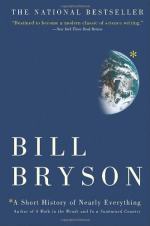
|
| Name: _________________________ | Period: ___________________ |
This test consists of 5 multiple choice questions, 5 short answer questions, and 10 short essay questions.
Multiple Choice Questions
1. The fact that Pluto has a moon was not discovered until:
(a) 1965.
(b) 1936.
(c) 1978.
(d) 1991.
2. Earth is the only planet in the solar system to have what?
(a) Mountains and valleys.
(b) Storms.
(c) Moons.
(d) Plate tectonics.
3. How do today's professional astronomers search for supernovae?
(a) Using classical mathematical predictions.
(b) In collaboration with astrologers.
(c) Hiring interns to peer through telescopes 24/7.
(d) With digital cameras and computers.
4. What is the average distance between asteroids found in the inner solar system between Mars and Jupiter?
(a) A thousand miles.
(b) A million miles.
(c) Ten billion miles.
(d) Ten thousand miles.
5. The Geiger counter is a:
(a) Magnetic imager.
(b) Molecular microscope.
(c) Voltage meter.
(d) Radioactivity detector.
Short Answer Questions
1. When radiation was first discovered, it was sometimes added to:
2. James Hutton was a geologist who wondered why:
3. What is found at the very center of the Earth?
4. Which of the following is NOT a quark "flavor?"
5. Our universe is at least how many light-years wide?
Short Essay Questions
1. Describe some of the theories regarding what might have caused the Big Bang.
2. What happened when Max Planck was advised to study math instead of physics?
3. Describe the three basic layers of Earth, namely, the crust, mantle, and core.
4. Describe the protons, neutrons, and electrons of an atom.
5. What happened when, in 1896, Henri Becquerel accidentally left a packet of uranium salts on top of a wrapped photographic plate?
6. When scientists first tried to grasp the idea of atoms, what did they disagree on?
7. How does the Superstring Theory explain quarks?
8. Describe what happened to an enormous thighbone discovered in New Jersey in 1789.
9. Explain Albert Einstein's theory of space curvature using a tennis ball and an ant.
10. Who was Bob Christiansen, and how did he determine that Yellowstone is a supervolcano?
|
This section contains 831 words (approx. 3 pages at 300 words per page) |

|




